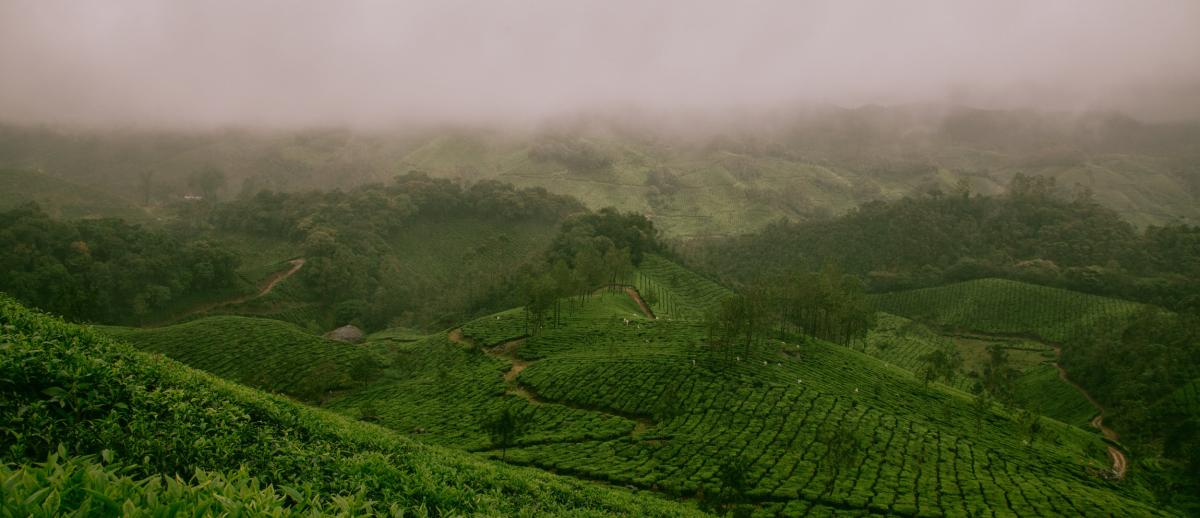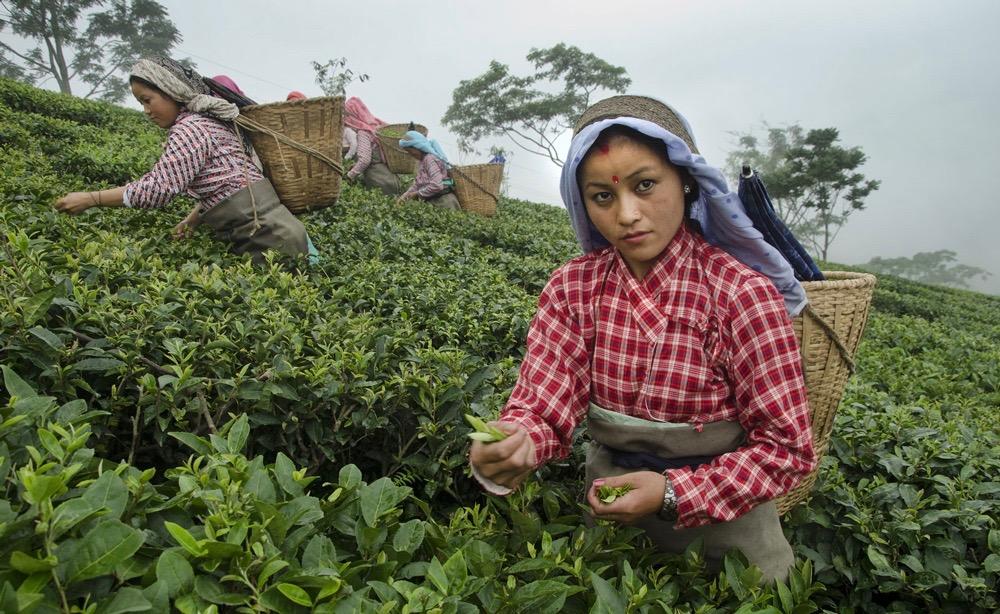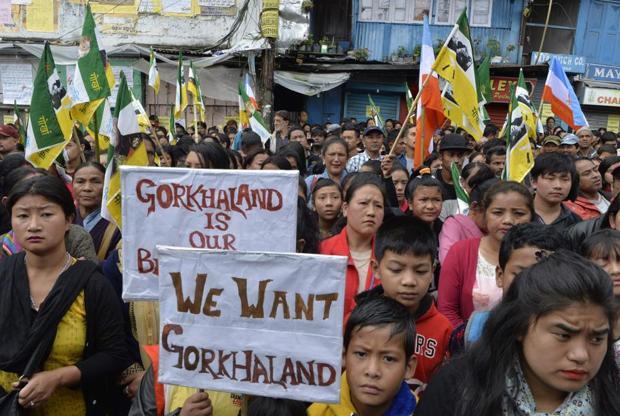Decaying Darjeeling Tea
archive


Decaying Darjeeling Tea
Darjeeling tea gardens of the Eastern Himalayas are one of the oldest and internationally most famous tea ventures in India. Darjeeling brands that adorn the shelves of Harrods in England, Kinokuniya in Japan, as well as shops and restaurants in Beijing, Frankfurt, Yangon, Chicago, and Kathmandu, consistently fetch the highest prices, earning millions in hard currency for India for more than 155 years. Today this orthodox darling of connoisseurs is dithering, wavering and struggling even to survive. In fact it is fatally sick, with problems ranging from low yields to poor health of its field workers; from steadily falling prices to fleeing management; from old and fledgling tea bushes to competition from other sources including nearby districts of Nepal, and falling production due to militancy among workers. All these issues have not only dislocated thousands of tea workers but also brought about very visible social and political tensions in the region. The decay of Darjeeling tea cultivation is a classic case of mulching to death by estate owners, governments, and trade unions.
In a region once famous for its “winter pause and spring growth” phenomenon, land under tea cultivation has gone down from 20,247 hectares in 1905 to less than 17,000 hectares, the number of tea gardens from 148 to around 87. Productivity is the lowest on the entire tea map of India. According to the Survey of Tea Gardens conducted by the Joint Labour Commissioner, North Bengal Zone (2012) while the standard average yield of tea estates in hill areas should be 500kg/hec or more only 34 out of the 81 gardens surveyed had 500kg/hec or more yield.
Even in the early 1980s Darjeeling produced 10-12 million kilograms of orthodox tea annually, which has now gone down to hardly 5-6 million kg. It was then under the Rupee trade agreement of India whereby most of the Darjeeling tea was sold to Soviet Union, which in turn—after blending with other tea varieties—surreptitiously sold over 30 million kgs on the global market under the name of the Darjeeling orthodox brand. It was only in 2004 that Darjeeling tea became the first product in India to be registered under the Geographical Indications of Goods (Registration and Protection) Act of 1999. Despite this, there are still reports of branding fraud taking place all over the globe.
Most worrisome is the fact that ownership has mostly been usurped by the merchant capitalists and petty traders who have no knowledge of, attachment to, or long-term interest in the tea estates of Darjeeling. In the absence of any regulatory institution, these traders—having no idea about the historical past of these tea gardens, the cultural and livelihood practices in the hills, and the local socio-political ethos—‘lock up’ and abandon these gardens at their whim and fancy. Well known international tea companies have quietly withdrawn and sold off their stakes.
Over 80 percent of the region’s tea bushes are more than 150 years old, yet replantation is negligible and marginal productivity is negative. Estate owners do not have the patience to cope with a gestation period of 5-8 years after replantation. They literally suck the very life out of these old bushes through over-reliance on harmful fertilizers and pesticides. Indeed, some buyers in the international market have criticized and resisted strong pesticide residues in Darjeeling tea, and have restricted imports. Yet this hardly affects the mindset of the new parasitic owners. Even though the “two leaves and a bud” tea plucking women (the labor of whose delicate fingers is an art in itself) have been afflicted by health problems ranging from TB, typhoid, and a heavy prevalence of NCDs (noncommunicable diseases like hypertension and high blood pressure) due to poor nutrition, the state and the policymakers are oblivious to the damage to local people and regional flora, fauna, and other livelihood practices like beekeeping and dairy farming. The entire prey-predator relationship of the region is dislocated.

Except for a few gardens, most of the companies have very blatantly violated the provisions of the Tea Plantation Act of 1951. The workers remain deprived from even basic needs like minimum wages, primary health care, drinking water, electricity, housing and education. The highest number of TB patients is reported in the gardens today. Because these were private properties on long-term leases, government projects including national poverty alleviation programs never reached them. Even after 71 years of independence and completing twelve five year plan periods, the government still harps on the remoteness of these localities to justify its inability to provide basic amenities like roads and communication. The hapless and deprived tea workers have now started asking the government how it is tht Coca Cola, shampoo, cell phones, and Uncle Chips are reaching these localities even though they are just products of companies, and not the proverbial state.
Even after the 73rd amendment of the Indian constitution in early 1990s, the Panchayat act (three tier elected local governance system) was never in reality extended to the entire Darjeeling tea growing areas. For a worker using a smart phone, the price fetched by Darjeeling tea on the international market and even in the nearby Calcutta auction center continues to remain an enigma. Defaults on mandatory payments of lifelong savings and social security to the tea workers, given in the form of a provident fund and gratuity by the tea garden owners, are at new highs. Garden owners have started selling local forest resources to pay the defaulted gratuity to workers. While many of the workers die without being paid these hard-earned benefits after their retirement, governments at both the national and provincial levels are mute spectators. Social security remains on paper. And the casualization of labor is an institutionalized practice today. The number of tea workers, which stood at 60,979 in 1961, had steadily come down to around 31,730 by 2012-13.
Most worrisome is the fact that ownership has mostly been usurped by the merchant capitalists and petty traders who have no knowledge of, attachment to, or long-term interest in the tea estates of Darjeeling.
Political parties exploited tea workers to the point of making them into radicals. This diabolical game, so notoriously started by the Left Parties of West Bengal, was intensified during the violent Gorkhaland movement by the Gorkha National Liberation Front and later by another political party, Gorkha Janamukti Morcha. Tea workers played the most critical role in highlighting the demand for a separate “Gorkhaland” state, consisting of the Darjeeling district and the Dooars region of West Bengal, within the constitutional framework of India. Yet the ultimate conflict resolution mechanisms—such as the semi-autonomous Darjeeling Gorkha Hill Council set up in 1988 and the Gorkhaland Territorial Administration in 2012, both emanating from the tripartite agreement among the national government, provincial government, and the agitating political parties—brought almost zero relief to tea workers. The plight of these workers was once again blatantly demonstrated just last year when Darjeeling hill country, including the tea gardens, remained continuously shut for full three months (between June and September) due to the renewed demands for Gorkhaland. Even after one year, the shut out tea workers are struggling to be paid their paltry three months wages by management.
At present the wage paid to a tea worker in Darjeeling is hardly US $2.00 (Rs 132.50) per day, far below the minimum wages of workers in other factories of Calcutta and that a daily worker gets in the Government of India. The snail's pace wage increase of tea workers over 150 years runs counter even to the fact that in the same West Bengal state, the Minimum Wages Act was implemented way back in 1951 for professions like agricultural, bakery, brick factory, wheat grinding, and saw mill workers—but never in the tea plantations. In order to camouflage this very exploitative daily wage, the tea garden owners artificially top it up with other benefits like food, umbrellas, and firewood.
Their contributions to tea workers wellbeing have been dismal and have added no succor to a dying industry. British companies under the colonial regime used to throw workers out of the garden precincts under a very whimsical pretext like ‘indiscipline’, popularly known in local language as “hattabahira” (out of the residential area). Ironically the persecuted workers now sometimes apply this “hattabahira” practice to throw out the parasitic part-time owners and management.

Supporters of the Gorkha Janmukti Morcha amid an indefinite strike called by the GJM in Darjeeling on 5 July, 2017. Photo: AFP
Meanwhile, trade unions with various political and ideological affiliations only fought for fringe benefits for their respective worker members, but never took up substantive issues like minimum wages, dividend sharing, land and hearth rights, and skill development and productivity improvement techniques. A study entitled Tea Plantation Workers in the Eastern Himalayas (Atma Ram & Sons, New Delhi, 1986) found that during the period 1979-1983, over 75 percent of the total 285 strikes and bandhs in these gardens were attributable to “sympathetic political reasons.” However, hardly any strikes took place because of issues that directly pertain to the workers. Laying off workers, the “lock up” syndrome, fleeing management, and abandoned tea gardens are very common. Some gardens have changed hands four times in ten years. And no trade union seems even remotely aware of the devastating impact of climate change on these magnificently nature-driven tea gardens. Frequent droughts, newer varieties of pests, drying up of springs, dislocation of prey-predator relations, warm winters and forest fires, irrigation requirements in areas where no one even thought of it two decade back, and the changing nature of disasters including frequent flash floods, have already plagued these gardens.
The harrowing experiences of workers even in government-owned gardens have been another shattering chapter. In some of them under West Bengal Tea Development Corporations and the Tea Trading Corporation of India, there are reported cases of starvation deaths. The hill economy is bearing the real brunt of the downward trend. Besides the large-scale flight of workers to other urban conglomerates in India and abroad, the societies and community life of the region remains fragmented and violent. The response of the State is, as usual, lackluster and partisan.
The Tea Board and government line ministries like Commerce and Environment and Science and Technology are busy repositioning India in the global world. Meanwhile, Darjeeling tea is fast reaching its death phase. It is not very much unlike the 150-year old cinchona quinine plantation in nearby Mungpoo and Lathpanchar in Darjeeling hills, once the source of the mother cure for dreaded malaria, which is also facing the same slow yet painful death.
Unless very drastic measures are taken—including company stakes in at least five gardens for a minimum of twenty years, banning individual ownership, five percent compulsory annual re-plantation, full implementation of the minimum wages act of 1948, provision of ownership of homes and lands, extension of all Central Government development projects, operationalization of the three-tier Panachayati raj, and total re-orientation of the 1951 Tea Plantation Act—then the Darjeeling tea industry will soon be a museum item. Interestingly, despite Darjeeling tea remaining a global brand of high heritage value and some of the profit-making companies investing in African countries, there is no museum or collection of artifacts that one can demonstrate to the large number of domestic and foreign tourists. The Darjeeling Himalayan Railway, which was actually started in 1881 mainly to carry Darjeeling tea to the Calcutta auction center, is already on UNESCO’s World Heritage list.
The Tea Board and government line ministries like Commerce and Environment and Science and Technology are busy repositioning India in the global world. Meanwhile, Darjeeling tea is fast reaching its death phase.
Furthermore, why must tea trading take place in Calcutta, and why are the owning companies all located in Calcutta? India disowned colonialism in 1947, yet internal colonialism has proliferated profusely in the vestiges of Bengal. Who will break this vicious nexus? Siliguri in the plains of the Darjeeling district, with its easy access to the Mongla and Chittagong ports in Bangladesh, would be a most attractive trading center that could pool teas from Assam, Dooars, Darjeeling, and even from nearby Bhutan and Nepal for export. But who thinks this way, even after the series of India-Bangladesh bilateral agreements, with regard to use of these easily accessible ports in Bangladesh? The floating of a very promising sub-regionalism concept like the Bangladesh-Bhutan-India and Nepal (BBIN) or South Asia Growth Quadrangle make this proposition commercially viable, where multilateral institutions like the World Bank, the Asian Development Bank, and even other institutions like JICA and the newly created AIIB, already have deep interest and stake holdings. The idea also fits very well into the Act (Look) East Policy, one of the cores of India’s present foreign policy matrices.
There are scores of buyers and niche markets for Darjeeling tea products, particularly in Europe, the US, and East Asia including Japan, who aspire to buy tea directly from the gardens. 'Fair trade' is emerging as the most sought after tag by the tea garden owners. Makaibari, Ambootia, Selimbong, Singell, and some other tea gardens have adopted organic tea cultivation practices and fetch handsome prices through private sales. Although the trickling down of these remunerative prices among the tea workers is yet to be evaluated, this practice certainly needs to be replicated in a more scientific and organized manner. This will also match the changing nature of global demand. The world is celebrating organic and herbal varieties of value-added tea sachets, champagnes, and perfumes, wine, aphrodisiacal doses all made from Darjeeling tea. So why doesn’t each garden have two parallel factories, one devoted to traditional bulk tea and another to value addition at the garden level? There are scores of foreign direct investors who are keen to undertake this, like Dilmah of Sri Lanka. According to the latest Foreign Direct Investment Policy of India 2017, there could be 100 percent foreign investment through favored automatic routes in the tea sector. This is something that foreign investors would take note of to harness the ready potential of the Darjeeling tea industry, for which brand promotion is hardly needed.
The bestowing of a geographical indication (GI) on Darjeeling products for safeguarding the region’s intellectual property has been widely acclaimed. Could we go one step further to get this entire industry enshrined on the World Heritage List of UNESCO? Finally, besides legislation to rejuvenate these gardens, replacement of the 1951 Tea Plantation Act and a strong national regulatory authority are absolutely critical today for the future of Darjeeling tea.



